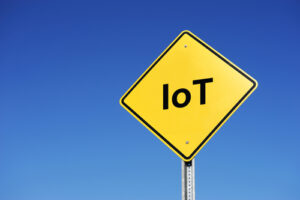 The Internet of Things (IoT) is everywhere these days and the combination of home security with home automation is bringing the two areas together, meaning that installers are now often dealing with consumer level systems as well as professional ones. The abundance of new systems on the market is leading to concerns about the huge amounts of data being generated and the security of networks that are being connected up to IoT devices.
The Internet of Things (IoT) is everywhere these days and the combination of home security with home automation is bringing the two areas together, meaning that installers are now often dealing with consumer level systems as well as professional ones. The abundance of new systems on the market is leading to concerns about the huge amounts of data being generated and the security of networks that are being connected up to IoT devices.
Fresh research commissioned by Neustar into the many guises of the IoT has revealed that although being the topic du jour of 2015, IT departments’ No. 1 concern is that the resulting explosion in data volumes will start to overwhelm their networks in 2016, leading to security concerns around keeping all the extra data safe. The report, compiled by independent analysis firm Quocirca, found that the scaling out to many thousands of devices per organisation clearly represents a wealth of new opportunities but highlighted the importance that the same security rigor and vigilance applied to traditional IT devices needs to be extended to all connected things.
The IoT is an evolutionary concept with as much power to improve existing or brown-field business processes as it does to create new green-field ones. Many equate the IoT purely to machine-to-machine (M2M) communications, but it is also about how humans interact with machines either through human-to-machine (H2M) such as industrial equipment or consumer devices, or machine-to-human (M2H) for things like digital signage. One thing is for certain, all this activity adds up to a huge number of devices with the overall average per individual UK organisation expected to run into the thousands over the next twelve months. All these devices will be attached to a variety of networks resulting in increased stress on both existing and new networks.
“The new UK-focused research contained in this report highlights that businesses looking to deploy IoT should consider a decentralised security and management model, as this would have the combined effect of reducing data volumes and relieving the considerable strain on networks,” said Hank Skorney, SVP Internet of Things for Neustar.
Although the report – compiled from the responses of 100 senior UK IT managers – shows that security is considered highly important by all respondents, it is clear that no business can ignore the wide range of issues arising from the growing numbers of network attached devices that constitute the IoT. Below is a breakdown of key findings and statistics from the report:
- Relevance: a small number (3%) think the IoT is overhyped, but the overwhelming majority say the IoT is already impacting their organisation (37%) or will soon (45%).
- Personal to Global: respondents believe the IoT is expected to scale up through vehicles, buildings, cities to the national and global level. Management and security capabilities put in place to support IoT must operate at these scales.
- Design: effective management and security is only possible through good design. 66% of respondents see viewing IoT deployment being a series of hubs that interoperate with spokes on closed networks, making network configuration and security more manageable.
- Security: Security starts with identity. 47% or respondents are already scanning IoT devices for vulnerabilities, another 29% are planning to do so. When asked about the capabilities they feel are most important for authenticating the identity of devices, nearly all see DNS services as playing an important role. More experienced users supplement these third party registry and IoT database services.
“Sceptic or otherwise, the IoT is now relevant to all organisations. Whether IoT applications are deployed to help IT function, driven by lines of business or through devices introduced by end users, various practices will need adapting to accommodate the millions of things involved which will, over time, dwarf the number of traditional IT endpoints,” explained Bob Tarzey, Analyst & Director, Quocirca. “These challenges can be minimised through thoughtful design and the use of hubs, in addition to new networks, management tools and security capabilities to get the most out of the IoT. Quocirca’s research suggests that the cost of supporting investments can be justified by the business value derived from newly IoT-enabled applications.”

